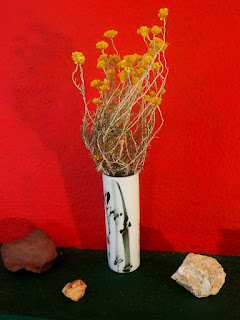 |
Wild Gladiolus, Gladiolus italicus |
Hello all, and I hope that you all had a good Easter, however you managed to celebrate it. I thought we’d start off with a nice Easter flower, the Wild Gladiolus, Gladiolus italicus, and an explanation of the odd title for this post. While writing this, I am listening to a seventies radio station, and a track came on just now that reminded me of an incident that occurred when I was working in laboratories during that period.
It
was lunchtime, I was sat in the somewhat crowded refectory, when a
colleague came through carrying a tray. There appeared to be only one
vacant seat, at a table of young women.
“Mind
if I join you?” he inquired.
“We’re
talking about women’s things”, came the rather sharp reply.
“That’s
OK”, he said, “I can do women’s talk”.
This
was greeted with silence and sceptical stares.
“Babies,
babies, green shield stamps?”, he ventured.
He
went down under a hail of cottage cheese on Ryvita, the unpalatable
atop the inedible. It was not a pretty sight.
 |
| Common Vetch, Vicia sativa |
Anyhow,
as this post is about the new life of Spring, and features, among its
participants, Green Shield Bugs (as opposed to green shield stamps) I
thought the title rather apt.
Plant
babies are their seeds, often within some sort of casing, such as the
seed pods of the legumes. This is the seed pod of Common Vetch, Vicia
sativa, which is cultivated for animal fodder. It is edible, but
there are similar looking pods whose contents are deadly, so they are
best avoided.
 |
| Green Shield Bugs [3rd Instar], Nezara viridula |
Now
to the Green Shield Bug babies. This is they, clustered on this
mallow. True bugs [HEMIPTERA] like these, undergo incomplete
metamorphosis. That is, they hatch from an egg, undergo several
moults, called instars, until they attain their adult form and
colour. Green Shield Bugs, Nezara viridula, have different
colours and patterns with each instar and this is the third instar.
 |
Beetles
[COLEOPTERA], on the other hand, undergo complete metamorphosis. They
go from egg to larva, (which looks nothing like the adult), then to
pupa, where they undergo a radical transformation before emerging in
their adult state. This common 7-spot ladybird, Coccinella
septempunctata, is a good example.
 |
| Everlasting, Helichrysum |
A
couple of weeks ago, in The
Love Life of Flowers, I
mentioned that this plant, Everlasting, Helichrysum,
is
a favourite with florists, because the flowers and leaves, when
dried, retain their shape and colour for a long time. However, I
didn’t know how long, exactly. I cut and dried some, and a
fortnight later, they are still on my mantelpiece and show no signs
of fading.
Finally,
there is only a week and a couple of days until the end of the month.
A good idea to order your copy of The
Quick Guide to Creepy-Crawlies
for £10 before it reverts to its normal price of £14.99 on May 1st . [Also discounted in dollars, euros, and other currencies].
|
See sample pages of all my books and latest
blog posts here:
|
|
|
All
you need to know to identify any type of insect, spider, worm or
snail very simply and find out more about it.
|
|
|
The
Eggs of Saramova
A
science fiction novella for those who don't like science fiction.
A fast-paced thriller that is, literally, out of this world (and
it starts right here in Crete).
|
|
|
A
light-hearted look at life through the eyes of the fairer sex.
|
|
|
Crete
Nature Catch-up
|
||
*********************************************************************
LINKS:
Share
your nature thoughts, photos and comments on Naturalists
(the
facebook page that accompanies this blog)
Explore
the region with the #CreteNature interactive Hiking
and Nature Map






No comments:
Post a Comment